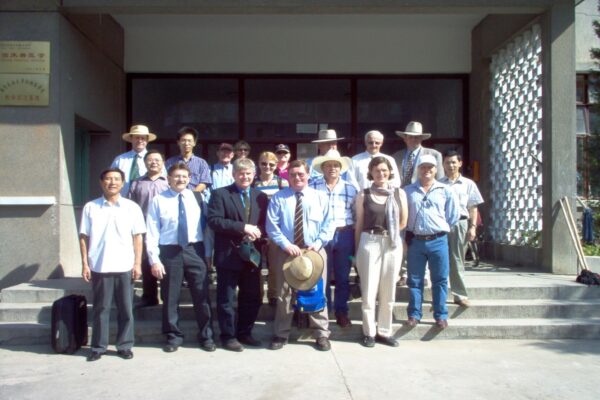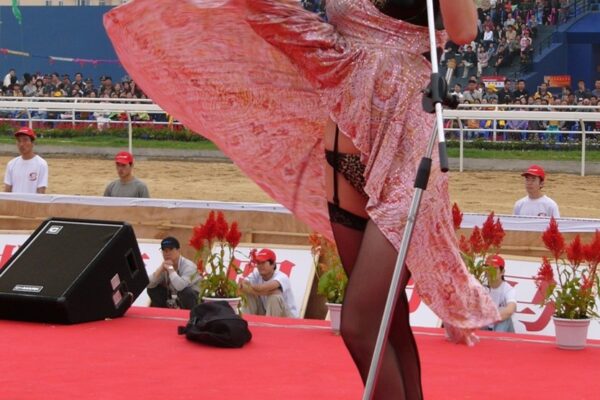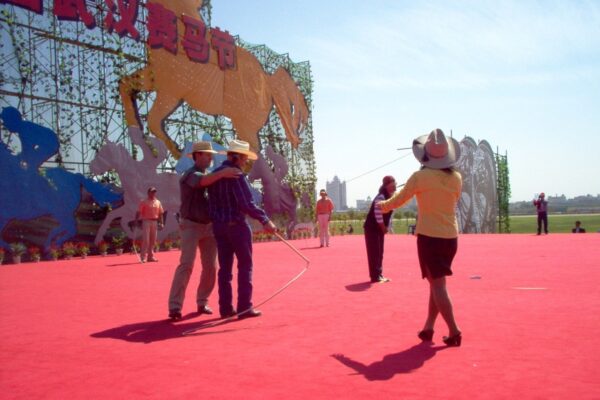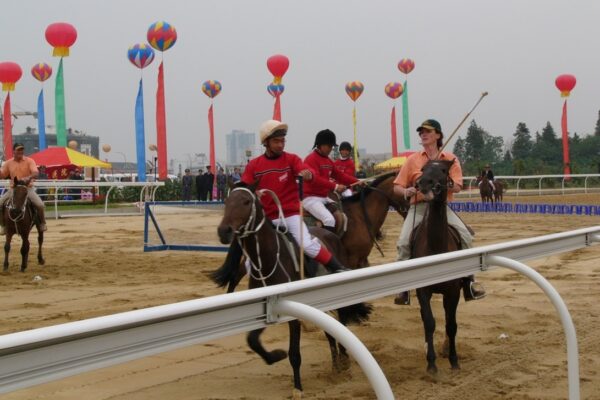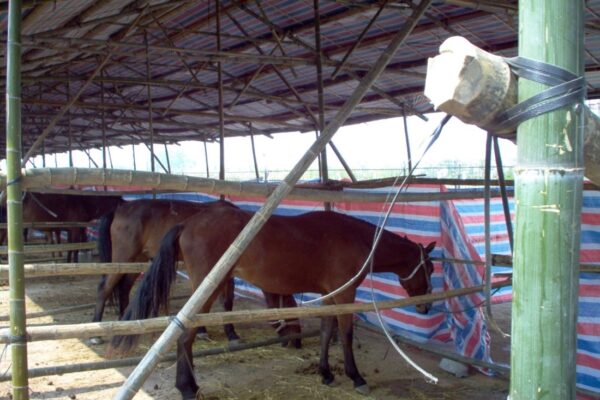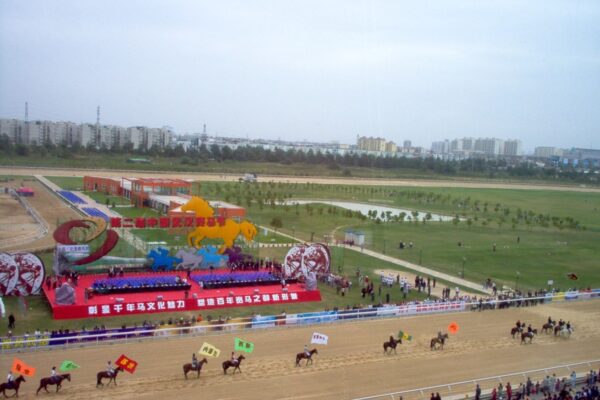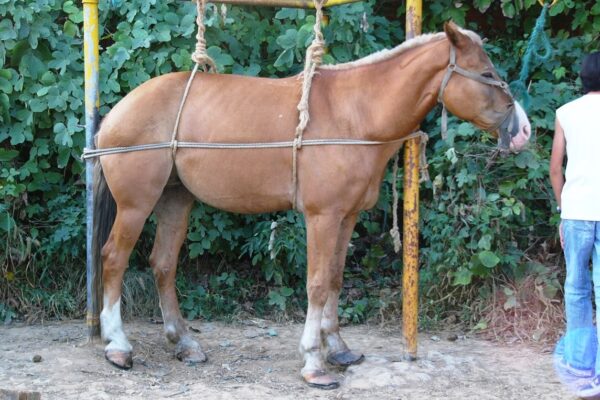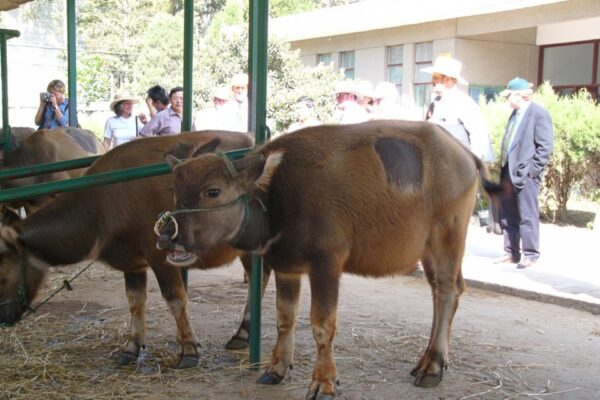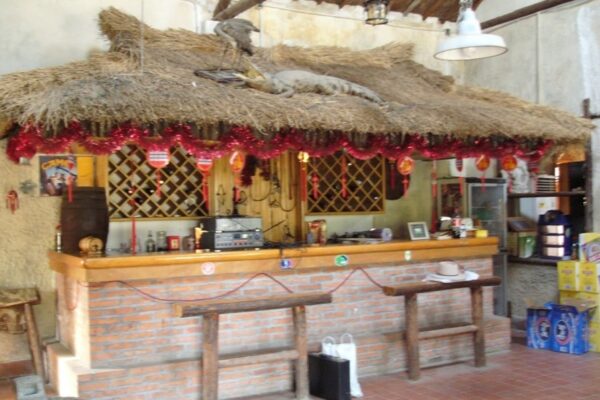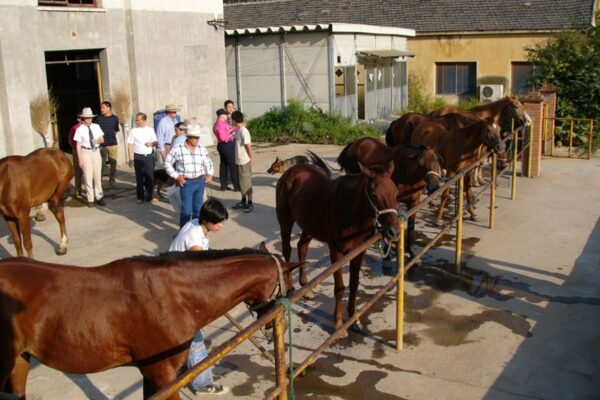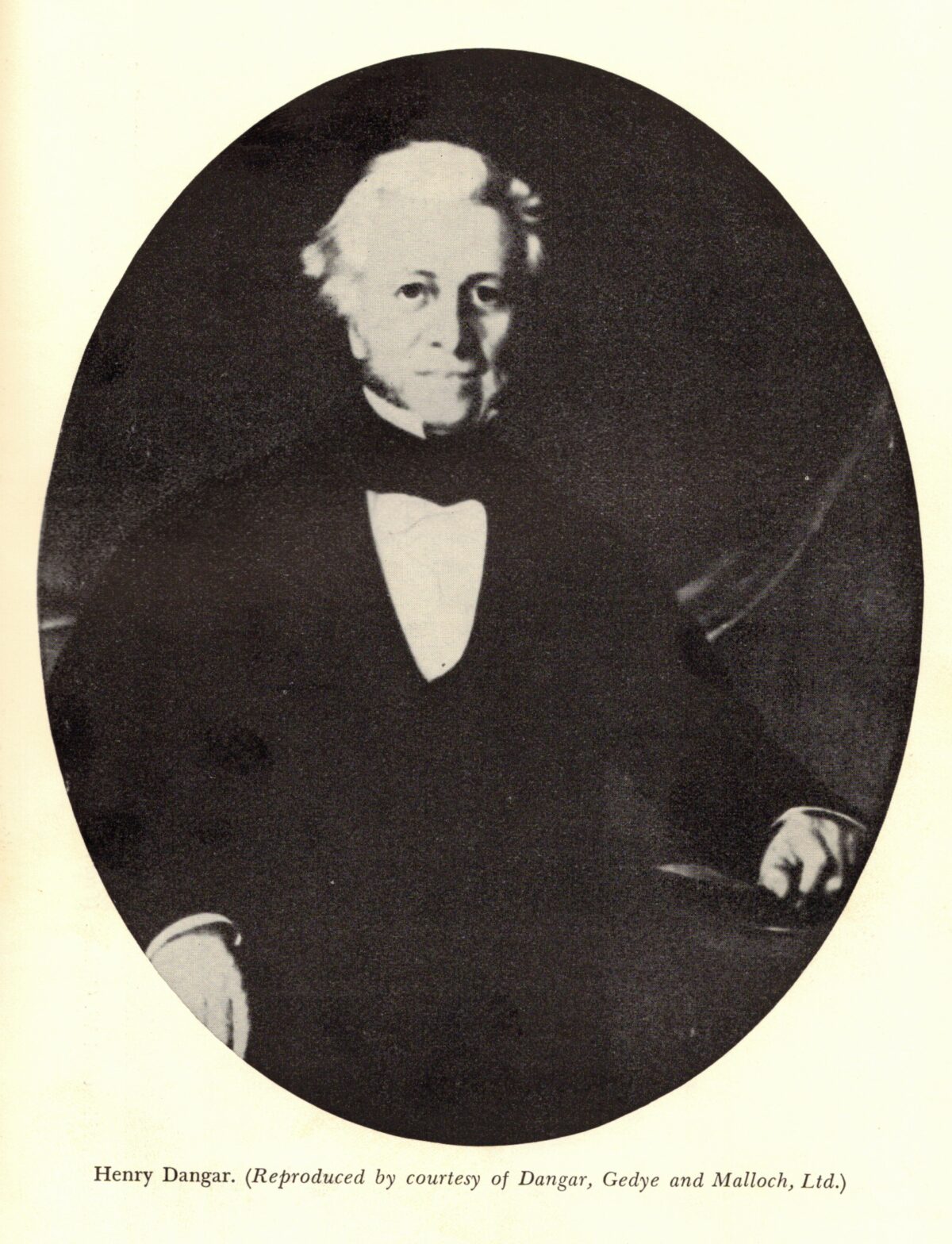Henry Dangar (1798 – 1861) and his Brothers
Featured Image: Henry Dangar (‘Dawn in the Valley’ by W. Allan Wood, reproduced by courtesy of Dangar, Gedye and Malloch, Ltd.))
Continuing the theme of who first introduced horses and eventually thoroughbreds into the Upper Hunter Valley there is little doubt that the Dangar Family are right at the forefront.
See: Biography – Henry Dangar – Australian Dictionary of Biography (anu.edu.au)
Henry was the patriarch and boasted six (6) brothers and five (5) sons. All except one in each generation contributed to the Upper Hunter Valley on Dangar family properties; the two ‘renegades’ Richard Cary (brother) and Francis Richard (grandson) were the youngest and returned to England, the latter unmarried. The principal properties were ‘Neotsfield’ (Singleton), ‘Turanville’ (Scone), ‘Drildool’, ‘Yallaroi’, ‘Gostwyck’ (Uralla) and ‘Baroona’ (Singleton).
The Dangars made a relatively slow start in the ‘horse-powered expansion stakes’. They do not seem to have been serious thoroughbred breeders to begin with, although they undoubtedly used thoroughbred stallions to improve their utility stockhorses and walers for export. The patriarch had studiously nurtured a very keen eye for commercial gain.
The family selected many early outstanding thoroughbred horses as well as fine Arab stock bred in India. This was a fundamental practice of the era designed to ‘improve the quality’ of the local breed. Included among the many fine foundation bloodstock were Grandmaster (GB 1868), Reginald (1881) by Grandmaster, Gibraltar (1887), The Watchdog (1895) by Gibraltar, Rose Gun (1898) by Gibraltar and Farhan (Arab).
Albert Augustus Dangar and Frank Dangar added Gainsborough (1876), Hawthornden (GB 1867) and Clan Stuart (GB 1881). In January 1897 Chairman of the Australian Jockey Club Henry Cary Dangar imported the superbly bred Positano (GB 1893 by St Simon ex Ponza). Poseidon (1903) was by Positano ex Jacinth and was an early champion of the 20th century racing under the banner of Sir Hugh Denison who had other nom de plumes. The ‘icing on the cake’ came later when Rodney Rouse Dangar (son of Albert Augustus Dangar) bred the outstanding all-time great Australian champion Peter Pan at ‘Baroona’ who went on to win dual Melbourne Cups in 1932 and 1934.
Dangar, Henry (1796–1861)
by Nancy Gray
This article was published:
- in the Australian Dictionary of Biography, Volume 1, 1966
- online in 2006
Henry Dangar (1796-1861), surveyor and pastoralist, was born on 18 November 1796 at St Neot, Cornwall, England, the son of William Dangar and his wife Judith, daughter of John Hooper. He was the first of six brothers to emigrate as free settlers to New South Wales. Soon after arrival in the Jessie on 2 April 1821 he was appointed assistant in the Survey Department and employed in the counties of Camden and Argyle.
When Governor Sir Thomas Brisbane began preparations early in 1822 for the free settlement of the Hunter River districts, Dangar was transferred to Newcastle to make a detailed and immediate survey of the valley, which was believed to extend only about twenty-five miles (40 km) to the north. He prepared the plans of King’s Town (Newcastle) and in the next two years measured and marked out village reserves, church lands and allocations for settlers along the lower branches of the Hunter River and as far north as Patrick’s Plains, furnishing in 1823 a detailed and valuable ‘Return of Land Cleared and Other Improvements made by Small Settlers’. Early in 1824 Colonel James Morisset, the commandant at Newcastle, complained that he was paying too much attention to his own 700-acre (283 ha) grant near Morpeth and too little to his official duties, whereupon Surveyor-General John Oxley ordered his transfer to another district.
The order was withdrawn and for the next year Dangar toiled almost unceasingly, marking the road from Newcastle to Wallis Plains (Maitland), measuring reserves and grants and working steadily northwards until he reached the hitherto unsettled upper districts of the Hunter River. In July 1824 he named Fal and Foy Brooks, in August explored the present sites of Muswellbrook, Aberdeen and Scone, crossed the Hunter and discovered and named Kingdon Ponds and Dartbrook. Soon afterwards he arranged an expedition to ascertain ‘the nature and point of junction of the stream from the westward’ which he had observed on his earlier journey up the Hunter. Accompanied by John Richards and two servants, Williamson and Allen, Dangar discovered in October 1824 the confluence of the Goulburn and Hunter Rivers, explored Dartbrook to its head where Allan Cunningham had crossed it in 1823, named Lamorran Brook (Wybong) and crossed the Liverpool Range to the plains beyond.
His reports caused an immediate rush of applicants for land grants in these desirable new districts and in May 1825 when he revisited the area, he was commissioned to select land for a number of settlers. His main purpose, however, was to accompany and advise Peter McIntyre, superintendent for Thomas Macqueen, in the selection of grants for Macqueen and for the McIntyre brothers. On returning from the Upper Hunter Dangar allocated for himself and his brother William land to which McIntyre believed he had prior claim. Dangar suggested a compromise which McIntyre regarded as a bribe and the affair was referred to the governor, who set up a board of inquiry. The board found Dangar guilty of using his public position for private gain and he was dismissed from office on 31 March 1827. Governor Sir Ralph Darling recommended that he be dispossessed of the land under dispute and required to take his grant in some other district.
He returned to England to appeal against this recommendation, claiming ample precedent for his actions. Oxley supported him, recording that ‘he has performed his duties with zeal and in the most efficient and correct manner, and afforded no occasion, within my knowledge, in the execution of arduous and perplexing duties, for censure and complaint against his public conduct’. Although the appeal was unsuccessful, this visit to England determined Dangar’s future career. During the voyage he wrote his Index and Directory to Map of the Country Bordering Upon the River Hunter, which was published in London in 1828. It demonstrated his skill as a cartographer and ability as a surveyor, and brought him to the immediate attention of the directors of the Australian Agricultural Co. He was offered, and accepted, an appointment as a surveyor to the company under Sir Edward Parry. Accompanied by his wife Grace, whom he married at St Neot on 13 May 1828, and by their infant son, he returned in April 1830 to take up his new position at Port Stephens.
In addition to topographical and soil reports on the company’s grants Dangar surveyed its 400,000-acre (161,876 ha) reserve north of the Manning River. So unfavourable were his reports of the whole area that Parry sent him to explore, as an alternative location, the Liverpool Plains districts recommended originally by Oxley. From the headwaters of the Manning Dangar crossed the Great Dividing Range to the Liverpool Plains, a feat of extreme endurance and skill which he performed for a second time soon afterwards, and selected for Parry’s personal examination an extensive area of attractive land. Parry then visited the district with him and after much negotiation, during which Dangar and the government surveyor, George White, made a joint survey, the company’s claim to the land was accepted by the government. This accomplished, Dangar’s services were no longer needed and in June 1833 he retired to his property, Neotsfield, near Singleton. ‘It is a comfort to feel that an officer, about to leave the Company’s service, is deserving of every consideration and assistance in my power’, wrote Parry when making arrangements for Dangar’s retirement.
Neotsfield, hitherto managed by Henry Dangar’s brother William, was a flourishing and highly-developed farm, its stock and produce receiving much favourable comment. Dangar quickly extended his interests, purchasing additional grazing properties and leasing extensive runs which by 1850 amounted to more than 300,000 acres (121,407 ha). Along the Great North Road to Liverpool Plains he acquired town allotments and established inns and stores. At Newcastle he had boiling-down works and meat-preserving and tinning works, and in New Zealand he established a steam flour-mill near the wheat farms around Official Bay. As a magistrate and member of the district council his experience and judgment were in frequent demand, and he gave time and energy to the agricultural and political advancement of the Hunter valley. In common with most large landholders who were seriously short of labour, he supported the proposed reintroduction of transportation and advocated the use of coolie labour. He welcomed the government’s immigration policy and sponsored many immigrant families from Britain and later from Saxony. With some hesitancy he accepted nomination for the electoral district of Hunter, Brisbane and Bligh in the first elective Legislative Council in 1843, but his brothers, Thomas and William Dangar, then both resident in the Upper Hunter, supported his successful opponent, William Dumaresq. In 1845 he was returned for Northumberland and remained a strongly conservative member of the council until 1851 when he retired from public life.
The magnitude and complexity of his pastoral and business interests, combined with the incessant demands of public office and private affairs, at length exhausted even Henry Dangar’s vitality. Early in 1852 he sailed for England, returning to New South Wales in 1856 after an extensive tour of the Continent. He lived in retirement at Grantham, Potts Point, a house described by his brother William who selected it for him as ‘wanting but ½ Dozen Brass Twelve Pounders to make the “Castle” complete’. He died on 2 March 1861 and was buried in the churchyard of All Saints’ Church of England, Singleton, in the ‘Chaste and suitable Tomb of Italian Marble’ for which his will provided and in which his widow, Grace, was buried on 18 August 1869.
Grace Dangar, daughter of John and Ann Sibly of St Neot, was a woman of courage and discernment, whose quiet humour nicely balanced her husband’s qualities. Mount Sibly, a peak of the Liverpool Range, was named by Dangar in honour of her family which, like his own, was of ancient Cornish origin. Surviving children of Henry and Grace Dangar were William John of Neotsfield, Henry Cary, M.L.A., Frederick Holkham, Albert Augustus, Francis Richard, Margaret and Florence.
Although by nature irascible and at times impatient, Henry Dangar had a strong sense of duty. His treatment of his employees was enlightened and just, and was rewarded by long and faithful service. Arthur Hunter Palmer (later premier of Queensland) entered his employ in 1838, eventually becoming manager of the entire Dangar estate. ‘We will have nothing further to do with petty contracts’, wrote Dangar to Palmer in 1846, ‘this being inclined to make me sick’. The unwritten agreement between the two ended only with Dangar’s death. Many Dangar relatives, including Charles Gedye, merchant, and Robert Dixon, surveyor, settled in New South Wales with Henry’s encouragement and support, while his five brothers all commenced their Australian careers with his assistance.
William Dangar (1800-1868) successfully managed Henry’s business affairs from 1825 to 1835 before settling at Turanville, Scone. His pastoral interests became so extensive that Turanville was managed by his brother-in-law, Samuel Wellington Cook, whose son established a stud-farm there. William inspired many of Henry’s progressive ventures and shared in others until he returned to England in 1857.
Thomas Dangar (1807-1878) was the first postmaster at Scone from 1836 to 1840, and established its first inn and store, and carried mail and stores to stations beyond the Liverpool Range before 1840. Although unsuccessful in business, he played a significant part in the development of the town and from 1861 to 1864 served as member of the Legislative Assembly for the Upper Hunter, where his warm humanity and generous treatment of his employees were long remembered. Richard Cary Dangar (1817-1866), one of the founders of Dangar, Gedye & Malloch, spent only a few years in New South Wales. Charles Cary Dangar (1809-1875) became a pioneer grazier of north-west New South Wales, and John Hooper Dangar (1811-1849) died at Turanville, Scone, ‘at peace with my brother Henry and family and with all the world’.
Cornish place names, scattered through the Hunter valley, mark Henry Dangar’s surveys and record his deep affection for his birthplace. Mount Dangar, Dangarfield and Dangarsleigh commemorate his name. His finest memorial, however, was the proud boast of his employees, and of their children and grandchildren, that they were ‘Dangar men’.
Select Bibliography
- Historical Records of Australia, series 1, vols 12-19
- F. Campbell, ‘The First Decade of the Australian Agricultural Company, 1824 to 1834’, Journal and Proceedings(Royal Australian Historical Society), vol 9, part 3, 1923, pp 113-60
- C. Rowland, ‘The Life and Times of Henry Dangar: Part 1’, Journal and Proceedings(Royal Australian Historical Society), vol 39, part 1, 1953, pp 1-23 , ‘Part 2’, vol 39, part 2, 1953, pp 49-76
- Parry journal (State Library of New South Wales)
- Henry Dangar field books (State Library of New South Wales)
- Dangar family papers (University of New England).
Related Entries in NCB Sites
- Dangar, Grace(wife)
- Lamb, Margaret Elizabeth(daughter)
- Dangar, William John(son)
- Dangar, Henry Cary(son)
- Dangar, Frederick Holkham(son)
- Dangar, Albert Augustus(son)
- Dangar, Francis Richard(son)
- Dangar, Marian Foster(daughter-in-law)
- Dangar, Lucy Jane(daughter-in-law)
- Dangar, Mary Phoebe(daughter-in-law)
- Lamb, Walter(son-in-law)
- Cook, Elizabeth Cary(sister)
- Dangar, Thomas(brother)
- Cook, Samuel Wellington(brother-in-law)
- Duckham, Elizabeth Dangar(niece)
- Dangar, Thomas Gordon(nephew)
- Cook, John(nephew)
- Dangar, Dorothy M.(granddaughter)
- Dangar, Richard Halifax(grandson)
- Dangar, Henry Phelps(grandson)
- Dangar, Rodney Rouse(grandson)
- Dangar, Horace William(grandson)
- Dangar, Norman Napier(grandson)
Citation details
Nancy Gray, ‘Dangar, Henry (1796–1861)’, Australian Dictionary of Biography, National Centre of Biography, Australian National University, https://adb.anu.edu.au/biography/dangar-henry-1954/text2349, published first in hardcopy 1966, accessed online 26 December 2022.
This article was published in hardcopy in Australian Dictionary of Biography, Volume 1, (Melbourne University Press), 1966
View the front pages for Volume 1
